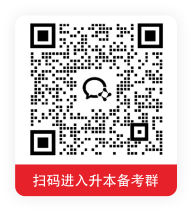

时态是学英语过程中最让人头疼的,过去时、现在时、进行时、完成时、将来时各种时态,应有尽有。小编为大家整理了专升本英语的各种时态特征,灵活运用好这些,一切时态都不成问题。
1.一般现在时
标志为do/does;is/am/are
①表示现在的情况、状态和特征。
例:He is a student.
他是一个学生。
②表示经常性、习惯性动作。
例:He always helps others.
他总是帮助别人。
③客观事实和普遍真理。
例:The earth moves around the sun.
地球绕着太阳转。
④表示一个按规定、计划或安排要发生的动作。(常用于列车、客车、飞机或轮船时刻表)
例:
The next train leaves at 3 o'clock this afternoon.
下一趟火车今天下午3点开车。
⑤主将从现:在时间、条件和让步状语从句中经常用一般现在表示将来的事情。
例:
If it rains tomorrow, we will stay at home.
如果明天下雨,我们会待在家里。
2.现在进行时
标志为am/is/are doing
①表示此时此刻正在发生的事情。
例:He is listening to the music now.
他现在正在听音乐。
②表示目前一段时间内一直在做的事情,但不一定此时此刻正在做。
例:I am studying computer this term.
这个学期我一直在学习计算机。
③现在进行时可以表示将来的含义。瞬时动词的进行一定表将来。持续动词的进行只有有将来的时间状语或有将来语境中才表将来。
例:I am leaving.
我要离开了。
例:I am travelling next month.
下个月我要去旅行。
④现在进行时与频度副词连用,表示说话者或褒义或贬义的感情色彩。
例:He is always helping others.
他总是帮助别人。
3.过去进行时
标志为was/ were doing
①表示在过去一个具体的时间正在发生的动作。
例:
Mary was listening to light music 10 minutes ago.
10 分钟前,玛丽正在听轻音乐。
②表示过去某个时间段内一直在发生的事情。
例:
I was travelling in London last summer vacation.
去年暑假我在伦敦旅行。
③过去进行时可以表示过去将来的含义。
瞬时动词的过去进行时一定表示过去将来的含义。持续动词的过去进行时只有在有过去将来的时间状语或过去将来的语境下才能表示过去将来。
例:Then she said she was leaving.
然后她说她要离开了。
例:
She said that she was travelling the next day.
她说她第二天要去旅行。
④过去进行时和频度副词连用可以表示说话者或褒义或贬义的感情色彩。
例:
When he lived in country, he was always helping the poor.
住在乡下时,他总是帮助穷人。
4.一般将来时
①基本结构是will do.
例:
We will send her a glass hand-made craft as her birthday gift.
我们将送给她一个玻璃的手工制品,作为给她的生日礼物。
②表示“打算…,要…”时,可用am/is/are going to do.
例:This is just what I am going to say.
这正是我想说的。
③表示“即将、正要”时,可用am/is/are about to do。强调近期内或马上要做的事。
例:
Don't worry, I am about to make a close examination on you.
别担心,我马上就给你做一次仔细的检查。
④"be to do"的 2种用法:
a)表示“按计划、安排即将发生某事或打算做某事”
例:She is to be seen in the lab on Monday.
星期一你准会在实验室见到她。
b) 该做或不该做的事情(语气上接近于should, must, ought to, have to),表示一种命令、规劝性语气。
例:You are to go to bed and keep quiet, kids. Our guests are arriving in less than 5minutes.
孩子们,你们必须上床睡觉,不准吵闹。我们的客人5分钟之内就要到了。
5.将来进行时
标志为will be doing
强调在将来的某个具体时间正在发生的动作或存在的状态。
例:Don't worry, you won't miss her. She will be wearing a red T-shirt and a white skirt at that time.
别担心,你不会认不出她的。她到时会穿一件红色的T恤衫和一条白色的短裙。
6.过去将来时
标志为would do
表示从过去的某个时间看将要发生的事。
例:I said on Thursday I should see my friend the next day.
我星期四说我将于第二天拜访我的朋友。
7.过去将来进行时
标志为would be doing
强调在过去将来的某个具体时间正在发生的动作或存在的状态。
例:The government promised that a new highway would be being built next July.
政府承诺说第二年7月将有一条新的高速公路正在修建。
8.一般过去时
标志为did; was/were
①表示过去某个时间发生的动作或情况。
例:I bought some fruits yesterday.
我昨天买了一些水果。
②表示过去习惯性动作。would/ used to do:过去常常......
例:
The old man would sit on a bench in the quiet park and look at others for hours without doing anything or talking to anybody.
老人过去常常坐在宁静的公园里的一条长椅上,看着其他的人,一坐就是数个小时,什么也不干,也不和任何人交谈。
例:He used to visit his mother once a week.
他以前总是每周看望一次他的母亲。
专升本免费资料限时领取↓↓↓



